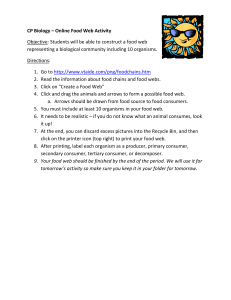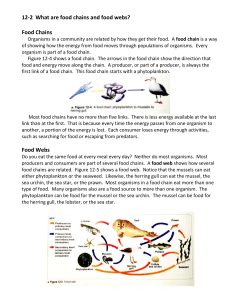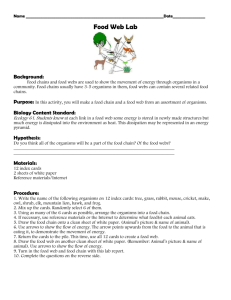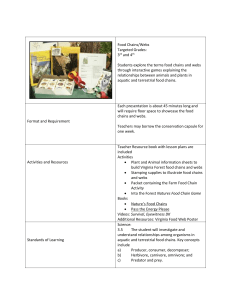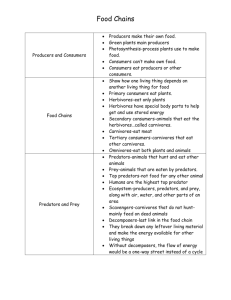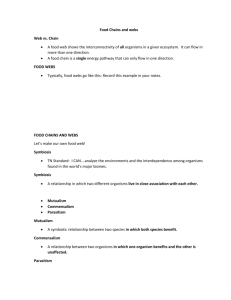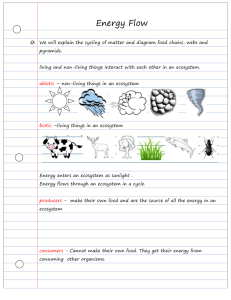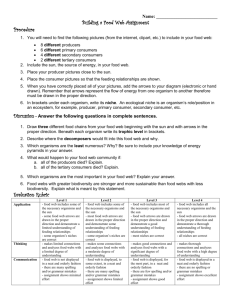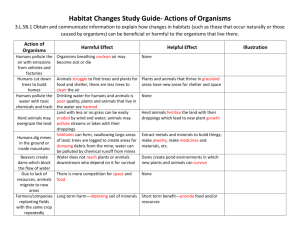What`s for Dinner? - Yale Peabody Museum of Natural History
advertisement
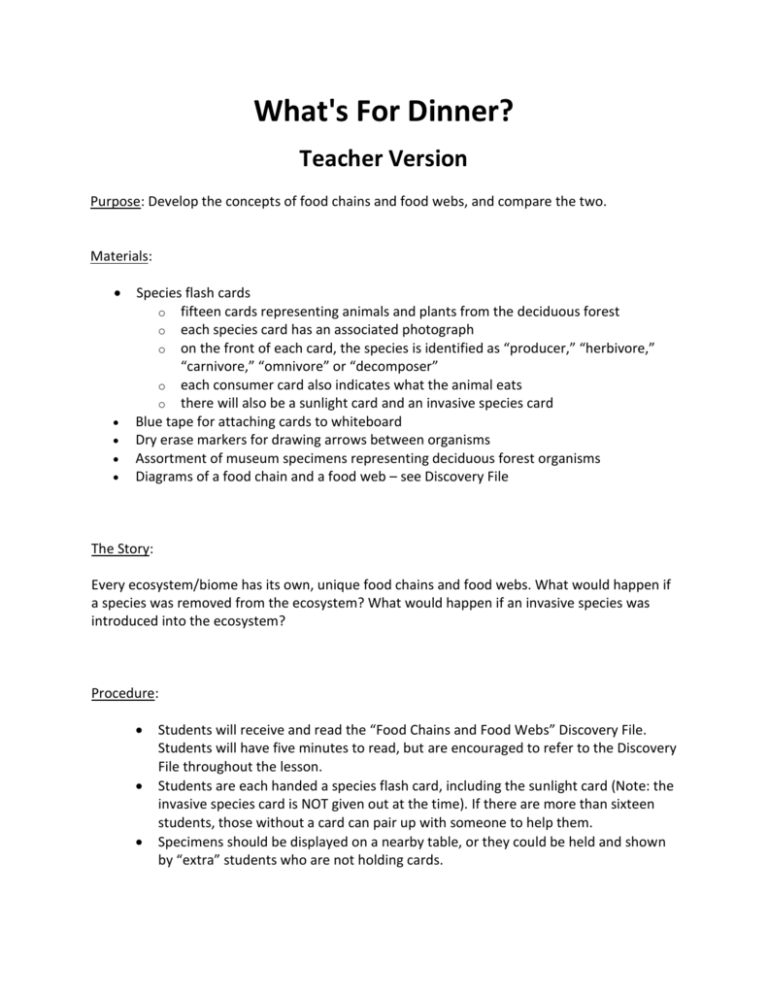
What's For Dinner? Teacher Version Purpose: Develop the concepts of food chains and food webs, and compare the two. Materials: Species flash cards o fifteen cards representing animals and plants from the deciduous forest o each species card has an associated photograph o on the front of each card, the species is identified as “producer,” “herbivore,” “carnivore,” “omnivore” or “decomposer” o each consumer card also indicates what the animal eats o there will also be a sunlight card and an invasive species card Blue tape for attaching cards to whiteboard Dry erase markers for drawing arrows between organisms Assortment of museum specimens representing deciduous forest organisms Diagrams of a food chain and a food web – see Discovery File The Story: Every ecosystem/biome has its own, unique food chains and food webs. What would happen if a species was removed from the ecosystem? What would happen if an invasive species was introduced into the ecosystem? Procedure: Students will receive and read the “Food Chains and Food Webs” Discovery File. Students will have five minutes to read, but are encouraged to refer to the Discovery File throughout the lesson. Students are each handed a species flash card, including the sunlight card (Note: the invasive species card is NOT given out at the time). If there are more than sixteen students, those without a card can pair up with someone to help them. Specimens should be displayed on a nearby table, or they could be held and shown by “extra” students who are not holding cards. After examining the specimens and cards, students will be challenged to sort the cards into one food chain. At least five cards must be used in the food chain. In this part of the activity, not all of the cards will be used, and it may work best for the teacher to start by asking the person with the sunlight card to tape it onto the whiteboard, and then help suggest each successive step. There are a number of possible chains that could be created with the 16 cards, but the thing to remember is that in a food chain there is no branching – it is just a single path from sunlight to top predator (and you can include a decomposer at the end if you want). Students must draw the arrows that show the direction of energy flow. Students will then create a food web using all of the cards. They will have 10 minutes to create their food web, again with arrows showing the direction of energy flow. All of the cards must be used in the food web. Optional: One student is given the invasive species card. The student should add it to the food web, and the teacher can lead a discussion about how it will affect the rest of the organisms. The teacher will need to give a bit of background about the Asian Longhorned Beetle and the level of damage it can cause to trees. Over time, it could kill off entire populations of tree species, and you can represent that by having the students who put the trees on the whiteboard go up and remove them. Then, if any other organisms rely entirely on trees, you can have those students also remove their organisms from the board. In reality, most animals that feed on trees (nuts, leaves, shoots) will probably be able to find other things to eat if one tree species disappears, but what students should understand is that this and other invasive species often cause severe disruptions of food webs. Assessment and Conclusion: Teacher will facilitate a class discussion comparing food chains and food webs. What can we learn from a food chain? Which one (chain or web) is more representative of real life? Students will be encouraged to use the food chain and food web they created as evidence for their comparison. Extension: Interactive Food Web Activity: Teacher will open up the following website: http://www.gould.edu.au/foodwebs/kids_web.htm Students may then work individually or as a group, matching individual species to their food web category.
